CubeSat Observation of the Radiation Field of the South Atlantic Anomaly
Abstract
1. Introduction
2. Instrumentation and Methods
2.1. CubeSat
2.2. PiDOSE
2.3. Position of the Measurement
2.4. Position of the South Atlantic Anomaly (SAA)
2.5. Data Processing
- (a)
- Calculation of the position of the satellite in the middle of the radiation detector, counting time by the method presented in Section 2.3.
- (b)
- Resampling data to a one-degree grid.
- (c)
- Calculation of the position of the radiation maximum as a centroid of the measured data (Section 2.4).
- (d)
- Graphical presentation of the results.
3. Results
4. Discussion
5. Conclusions
Author Contributions
Funding
Institutional Review Board Statement
Informed Consent Statement
Data Availability Statement
Acknowledgments
Conflicts of Interest
References
- Van Allen, J.A. The geomagnetically trapped corpuscular radiation. J. Geophys. Res. 1959, 64, 1683–1689. [Google Scholar] [CrossRef]
- Ye, Y.; Zou, H.; Zong, Q.; Chen, H.; Wang, Y.; Yu, X.; Shi, W. The Secular Variation of the Center of Geomagnetic South Atlantic Anomaly and Its Effect on the Distribution of Inner Radiation Belt Particles. Space Weather 2017, 15, 1548–1558. [Google Scholar] [CrossRef]
- Jones, A.D.; Kanekal, S.G.; Baker, D.N.; Klecker, B.; Looper, M.D.; Mazur, J.E.; Schiller, Q. SAMPEX observations of the South Atlantic anomaly secular drift during solar cycles 22–24. Space Weather 2017, 15, 44–52. [Google Scholar] [CrossRef]
- Kurnosova, L.V.; Kolobyanina, T.N.; Logachev, V.I.; Razorenov, L.A.; Sirotkin, I.A.; Fradkin, M.I. Discovery of radiation anomalies above the South Atlantic at heights of 310–340 km. Planet. Space Sci. 1962, 9. [Google Scholar] [CrossRef]
- Underwood, C.I. In-orbit radiation effects monitoring on the UoSAT satellites. In Proceedings of the Annual AIAA/Utah State University Conference on Small Satellites, Logan, UT, USA, 27–30 August 1990. [Google Scholar]
- Deme, S.; Reitz, G.; Apáthy, I.; Héjja, I.; Láng, E.; Fehér, I. Doses due to the South Atlantic anomaly during the Euromir’95 mission measured by an on-board TLD system. Radiat. Prot. Dosim. 1999, 85, 301–304. [Google Scholar] [CrossRef] [PubMed]
- Heirtzler, J.R. The future of the South Atlantic anomaly and implications for radiation damage in space. J. Atmos. Solar-Terr. Phys. 2002, 64, 1701–1708. [Google Scholar] [CrossRef]
- Heynderickx, D. Comparison between methods to compensate for the secular motion of the South Atlantic Anomaly. Radiat. Meas. 1996, 26, 369–373. [Google Scholar] [CrossRef]
- Hartmann, G.A.; Pacca, I.G. Time evolution of the South Atlantic Magnetic Anomaly. An. Acad. Bras. Cienc. 2009, 81, 243–255. [Google Scholar] [CrossRef]
- Schaefer, R.K.; Paxton, L.J.; Selby, C.; Ogorzalek, B.; Romeo, G.; Wolven, B.; Hsieh, S.Y. Observation and modeling of the South Atlantic Anomaly in low Earth orbit using photometric instrument data. Space Weather 2016, 14, 330–342. [Google Scholar] [CrossRef]
- Lanzerotti, L.J.; Gary, D.E.; Nita, G.M.; Thomson, D.J.; MacLennan, C.G. Noise in wireless systems from solar radio bursts. Adv. Space Res. 2005, 36, 2253–2257. [Google Scholar] [CrossRef]
- Anderson, P.C.; Rich, F.J.; Borisov, S. Mapping the South Atlantic Anomaly continuously over 27 years. J. Atmos. Solar-Terr. Phys. 2018, 177, 237–246. [Google Scholar] [CrossRef]
- Aubry, M.; Costes-Ori, V.; Standarovski, D.; Ecoffet, R. Analysis of the Drift of the South Atlantic Anomaly from ICARE and SEM-2 Flight Data. IEEE Trans. Nucl. Sci. 2020, 67, 1251–1255. [Google Scholar] [CrossRef]
- Konradi, A.; Badhwar, G.D.; Braby, L.A. Recent space shuttle observations of the South Atlantic anomaly and the radiation belt models. Adv. Space Res. 1994, 14, 911–921. [Google Scholar] [CrossRef]
- Badhwar, G.D. Drift rate of the South Atlantic Anomaly. J. Geophys. Res. Space Phys. 1997, 102, 2343–2349. [Google Scholar] [CrossRef] [PubMed]
- Bühler, P.; Zehnder, A.; Kruglanski, M.; Daly, E.; Adams, L. The high-energy proton fluxes in the SAA observed with REM aboard the MIR orbital station. Radiat. Meas. 2002, 35, 489–497. [Google Scholar] [CrossRef]
- Ginet, G.P.; Madden, D.; Dichter, B.K.; Brautigam, D.H. Energetic proton maps for the South Atlantic Anomaly. In Proceedings of the IEEE Radiation Effects Data Workshop, Honolulu, HI, USA, 23–27 July 2007. [Google Scholar]
- Grigoryan, O.R.; Romashova, V.V.; Petrov, A.N. SAA drift: Experimental results. Adv. Space Res. 2008, 41, 76–80. [Google Scholar] [CrossRef]
- Fürst, F.; Wilms, J.; Rothschild, R.E.; Pottschmidt, K.; Smith, D.M.; Lingenfelter, R. Temporal variations of strength and location of the South Atlantic Anomaly as measured by RXTE. Earth Planet. Sci. Lett. 2009, 281, 125–133. [Google Scholar] [CrossRef]
- Casadio, S.; Arino, O. Monitoring the South Atlantic Anomaly using ATSR instrument series. Adv. Space Res. 2011, 48, 1056–1066. [Google Scholar] [CrossRef]
- Qin, M.; Zhang, X.; Ni, B.; Song, H.; Zou, H.; Sun, Y. Solar cycle variations of trapped proton flux in the inner radiation belt. J. Geophys. Res. Space Phys. 2014, 119, 9658–9669. [Google Scholar] [CrossRef]
- Olsen, N.; Mandea, M. Investigation of a secular variation impulse using satellite data: The 2003 geomagnetic jerk. Earth Planet. Sci. Lett. 2007, 255, 94–105. [Google Scholar] [CrossRef]
- Toorian, A.; Diaz, K.; Lee, S. The CubeSat approach to space access. In Proceedings of the IEEE Aerospace Conference Proceedings, Big Sky, MT, USA, 1–8 March 2008. [Google Scholar]
- Poghosyan, A.; Golkar, A. CubeSat evolution: Analyzing CubeSat capabilities for conducting science missions. Prog. Aerosp. Sci. 2017, 88, 59–83. [Google Scholar] [CrossRef]
- Blackwell, W.J.; Allan, G.; Allen, G.; Burianek, D.; Busse, F.; Elliott, D.; Galbraith, C.; Leslie, R.; Osaretin, I.; Shields, M.; et al. Microwave Radiometer Technology Acceleration Mission (MiRaTA): Advancing Weather Remote Sensing with Nanosatellites. In Proceedings of the 28th Annual AIAA/USU Conference on Small Satellites, Logan, UT, USA, 4–7 August 2014. [Google Scholar]
- Westerhoff, J.; Earle, G.; Bishop, R.; Swenson, G.R.; Vadas, S.; Clemmons, J.; Davidson, R.; Fanelli, L.; Fish, C.; Garg, V.; et al. LAICE CubeSat mission for gravity wave studies. Adv. Space Res. 2015, 56, 1413–1427. [Google Scholar] [CrossRef]
- Weiss, W.W.; Rucinski, S.M.; Moffat, A.F.J.; Schwarzenberg-Czerny, A.; Koudelka, O.F.; Grant, C.C.; Zee, R.E.; Kuschnig, R.; Mochnacki, S.; Matthews, J.M.; et al. BRITE-Constellation: Nanosatellites for Precision Photometry of Bright Stars. Publ. Astron. Soc. Pacific 2014, 126, 573. [Google Scholar] [CrossRef]
- Li, X.; Schiller, Q.; Blum, L.; Califf, S.; Zhao, H.; Tu, W.; Turner, D.L.; Gerhardt, D.; Palo, S.; Kanekal, S.; et al. First results from CSSWE CubeSat: Characteristics of relativistic electrons in the near-Earth environment during the October 2012 magnetic storms. J. Geophys. Res. Space Phys. 2013, 118, 6489–6499. [Google Scholar] [CrossRef]
- Desai, M.I.; Allegrini, F.; Ebert, R.W.; Ogasawara, R.; Epperly, M.E.; George, D.E.; Christian, E.R.; Kanekal, S.G.; Murphy, N.; Randol, B. The CubeSat Mission to Study Solar Particles. IEEE Aerosp. Electron. Syst. Mag. 2019, 34, 16–28. [Google Scholar] [CrossRef]
- Gieseler, J.; Oleynik, P.; Hietala, H.; Vainio, R.; Hedman, H.P.; Peltonen, J.; Punkkinen, A.; Punkkinen, R.; Säntti, T.; Hæggström, E.; et al. Radiation monitor RADMON aboard Aalto-1 CubeSat: First results. Adv. Space Res. 2020, 66, 52–65. [Google Scholar] [CrossRef]
- Simms, L.M.; Jernigan, J.G.; Malphrus, B.K.; McNeil, R.; Brown, K.Z.; Rose, T.G.; Lim, H.S.; Anderson, S.; Kruth, J.A.; Doty, J.P.; et al. CXBN: A blueprint for an improved measurement of the cosmological x-ray background. In Proceedings of the Hard X-ray, Gamma-ray, and Neutron Detector Physics XIV, San Diego, CA, USA, 24 October 2012; Volume 8507, p. 19. [Google Scholar]
- Kovář, P. piNAV L1—GPS receiver for small satellites. Gyroscopy Navig. 2017, 8, 159–164. [Google Scholar] [CrossRef]
- Kovář, P. Start Acceleration of the Space GPS Receiver. Int. J. Electron. Telecommun. 2020, 66, 745–752. [Google Scholar]
- Kovar, P. Experiences with the GPS in Unstabilized CubeSat. Int. J. Aerosp. Eng. 2020, 2020, 1–20. [Google Scholar] [CrossRef]
- Laifr, J.; Kovář, P. High altitude balloon test flight of miniature low power dosimeter for small satellites. Slabop. Obz. 2018, 74, 1–3. [Google Scholar]
- Kovar, P.; Sommer, M.; Matthiae, D.; Reitz, G. Measurement of cosmic radiation in LEO by 1U CubeSat. Radiat. Meas. 2020, 139, 106471. [Google Scholar] [CrossRef]
- Perov, A.; Charisova, V. GLONASS, Principles, Architecture and Function; Radiotechnika: Moscow, Russia, 2010; ISBN 978-5-88070-251-0. [Google Scholar]
- Subirana, J.S.; Zornoza, J.M.; Hernández-Pajares, M. GNSS DATA PROCESSING Volume I: Fundamentals and Algorithms; ESA Communications; ESTEC: Noordwijk, The Netherlands, 2013; ISBN 978-92-9221-886-7. [Google Scholar]
- Galperin, G.A. A concept of the mass center of a system of material points in the constant curvature spaces. Commun. Math. Phys. 1993, 154, 63–84. [Google Scholar] [CrossRef]
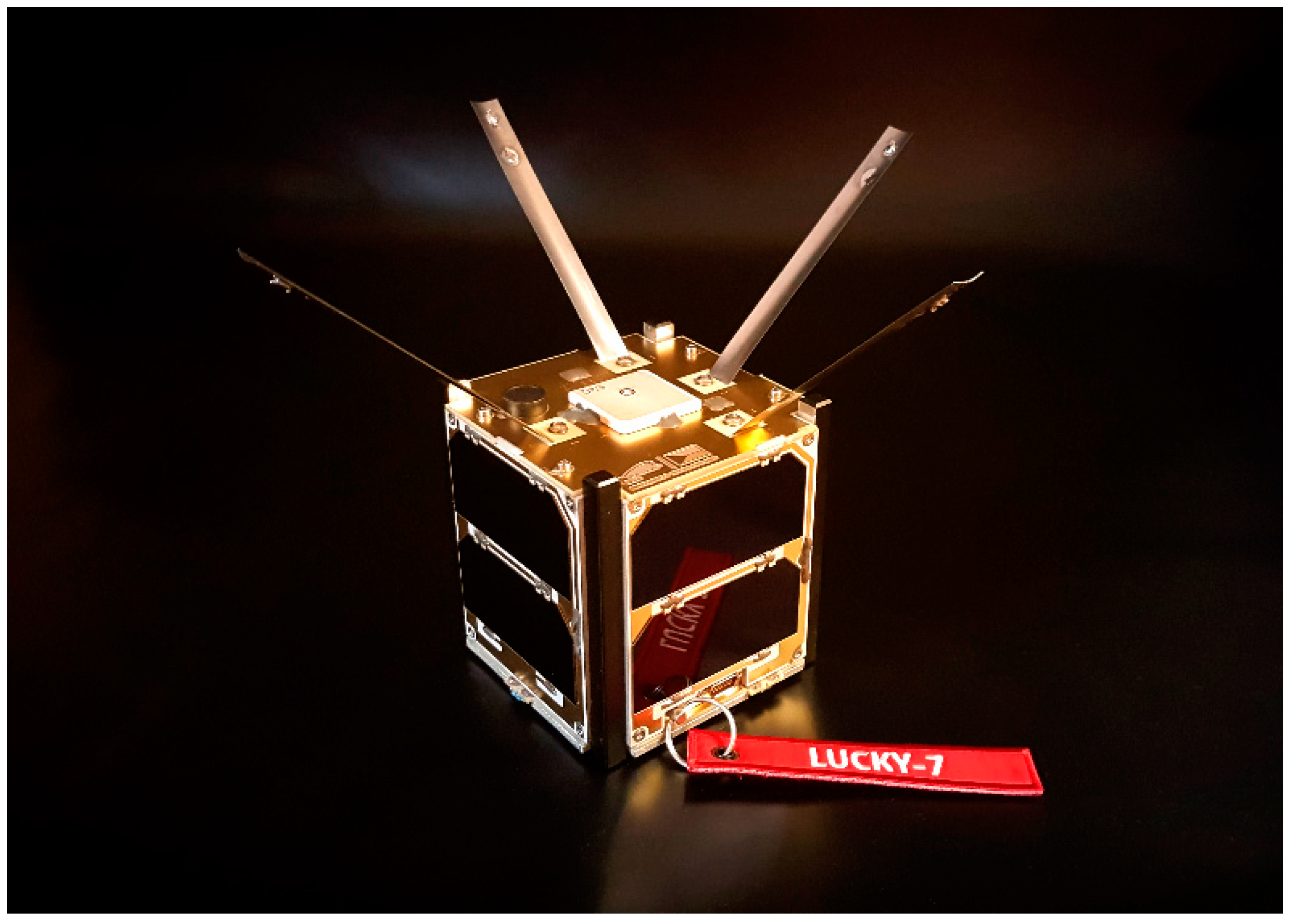
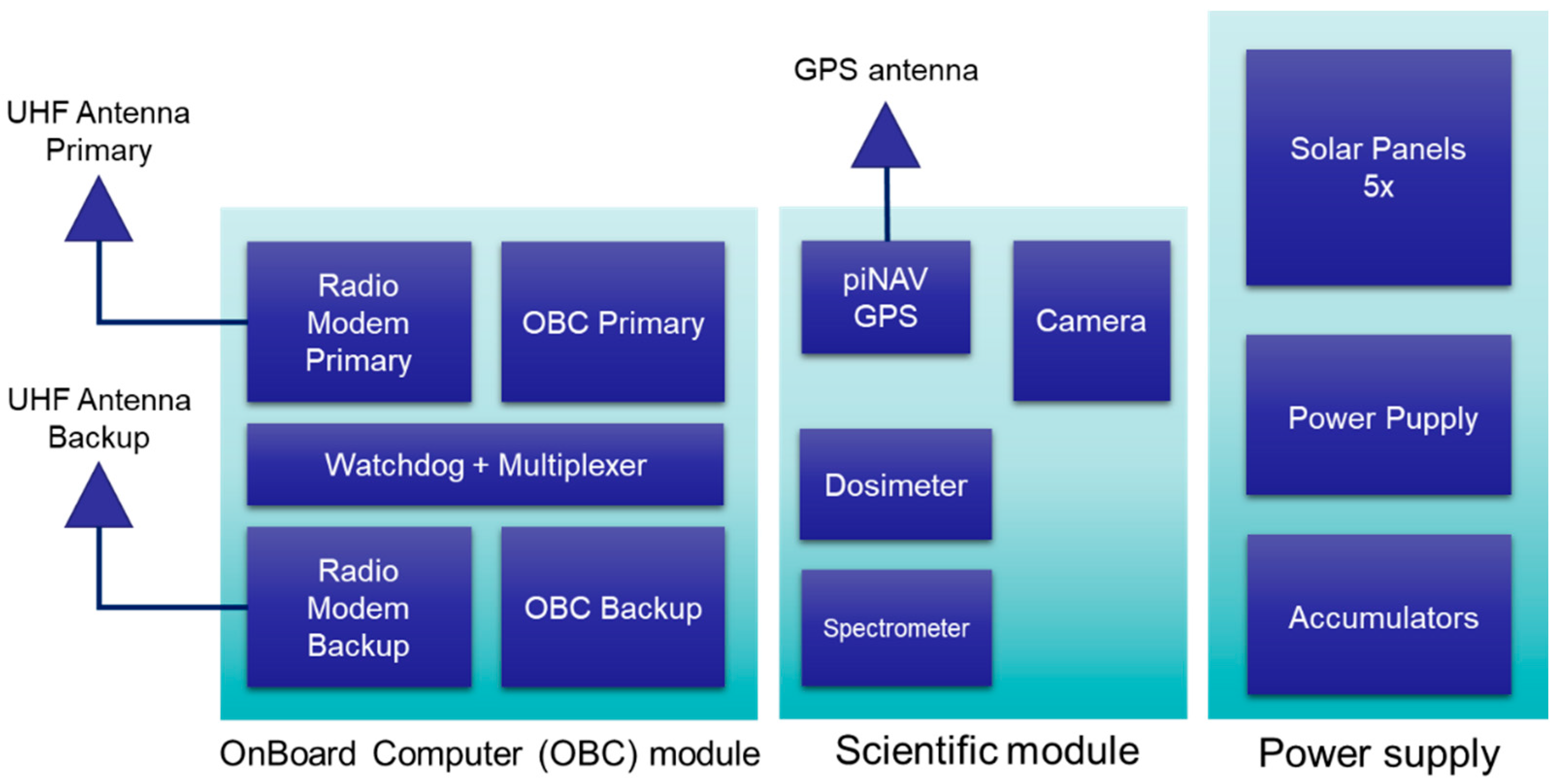
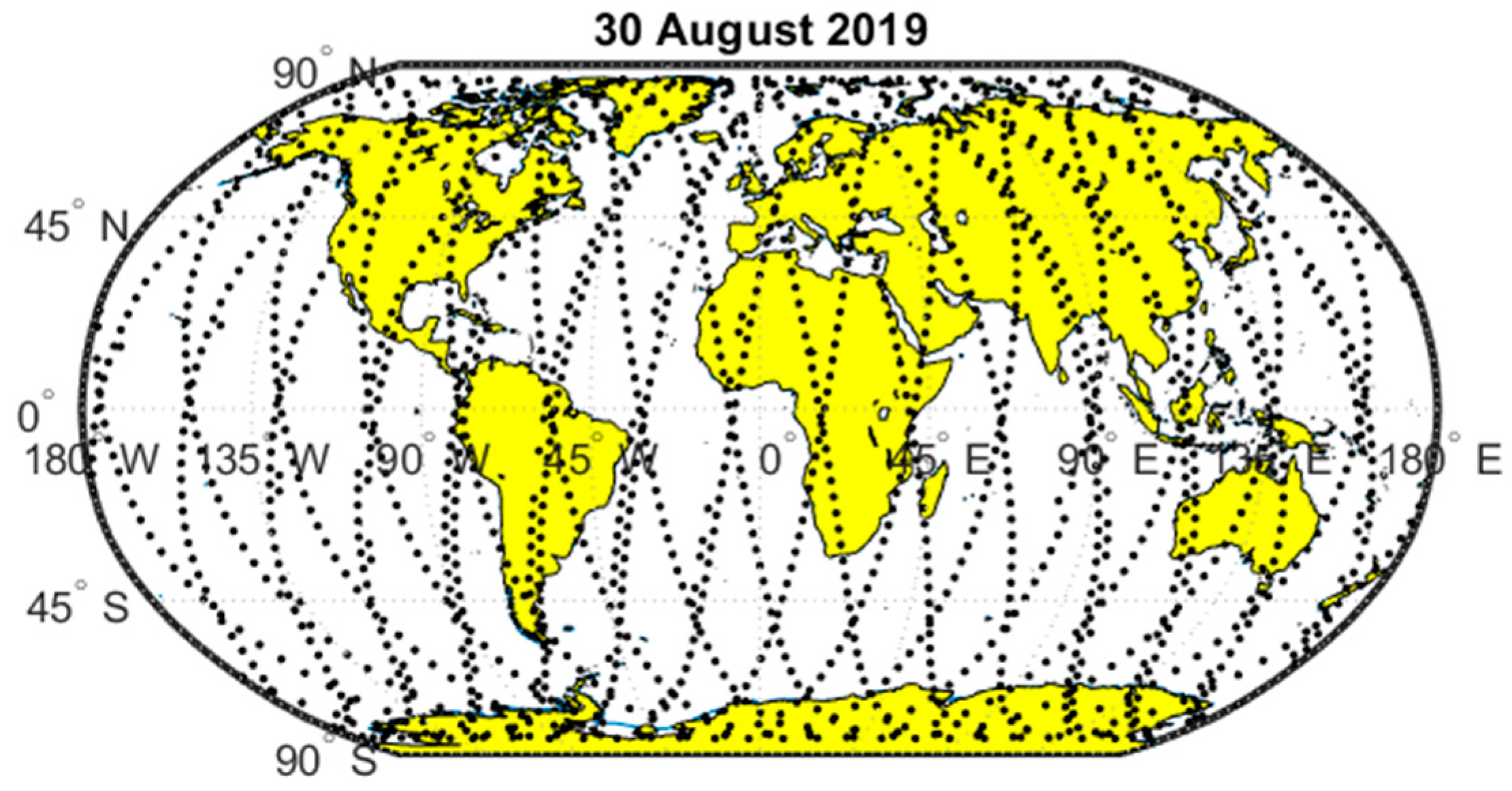
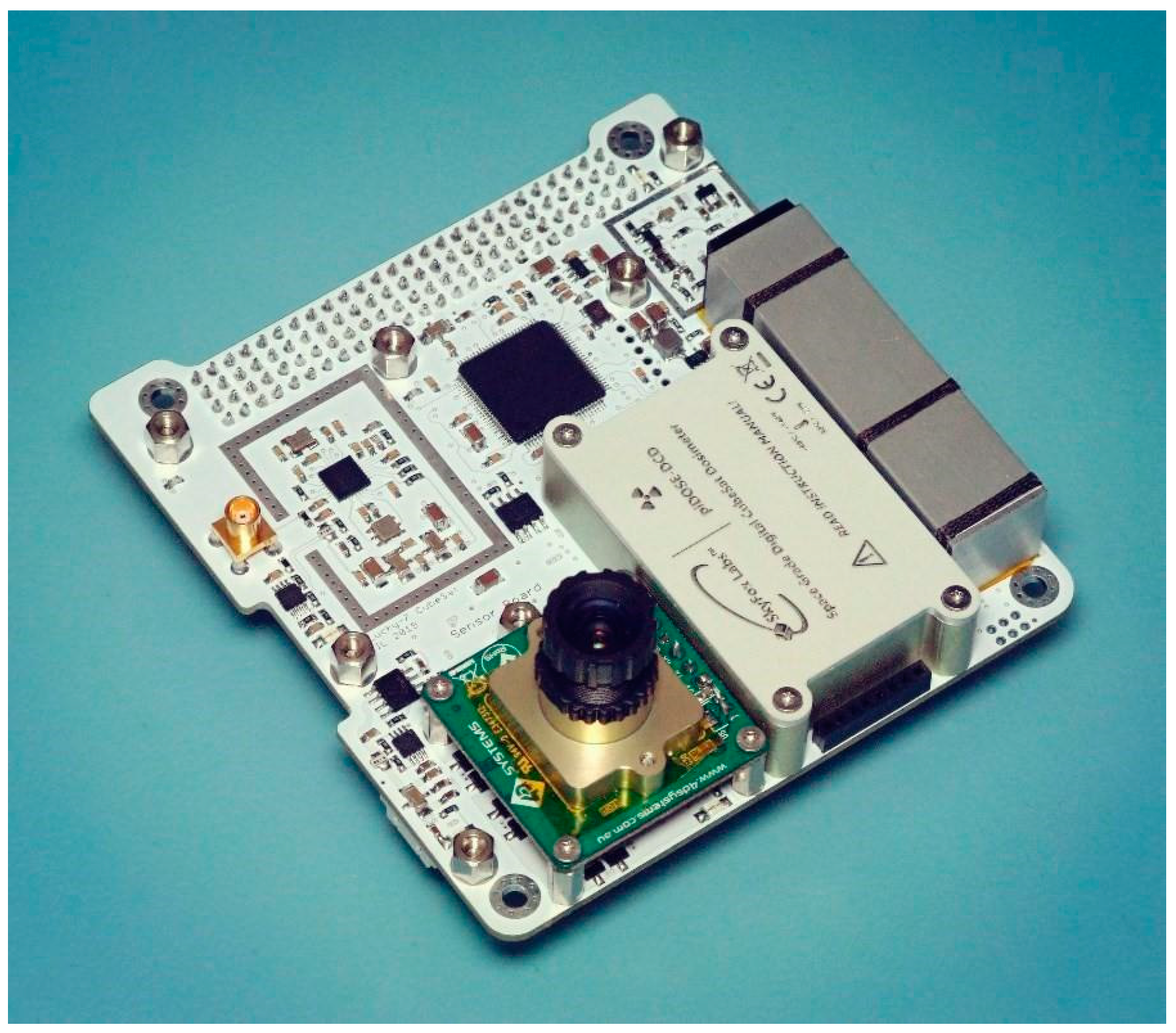
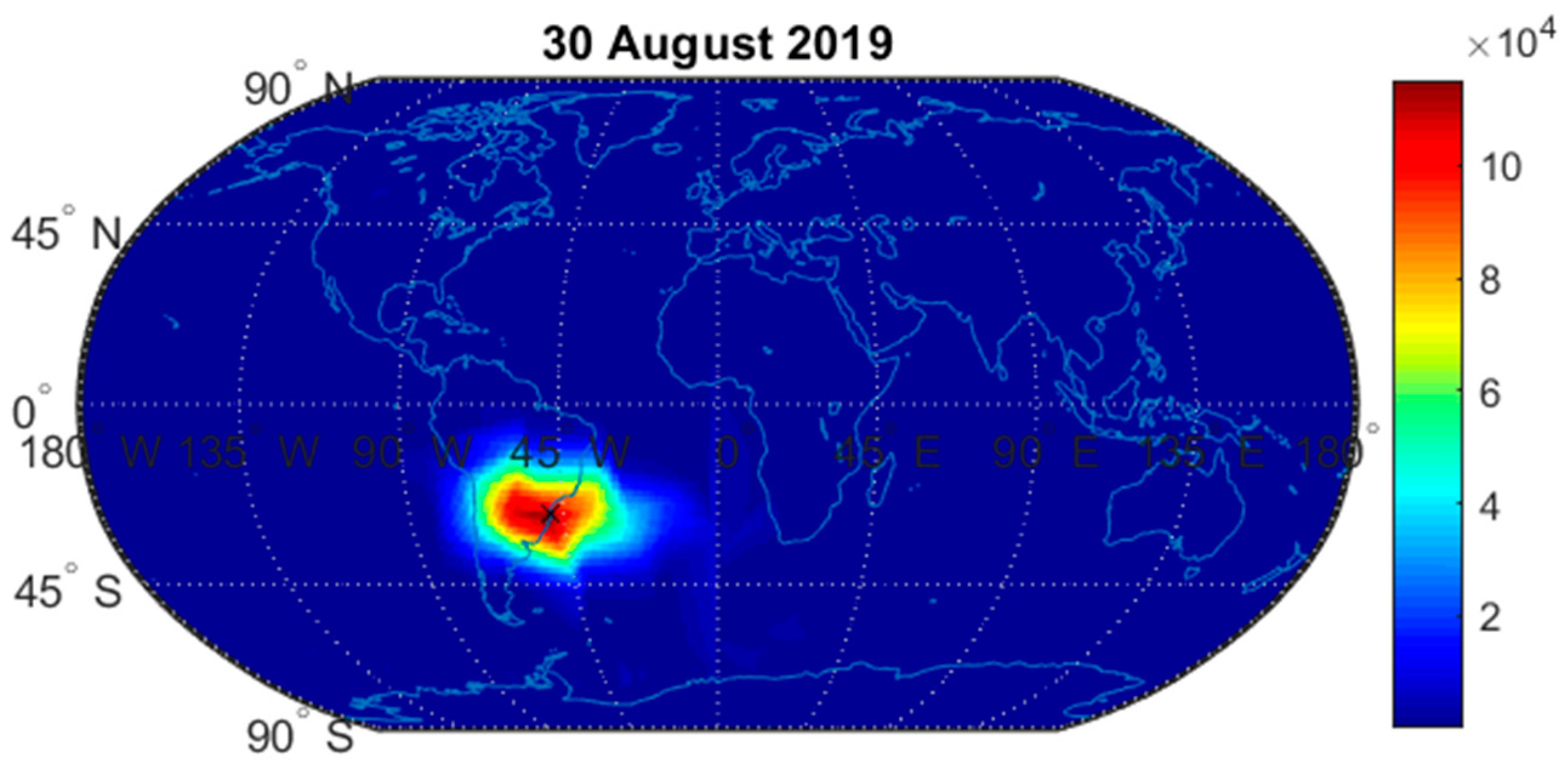
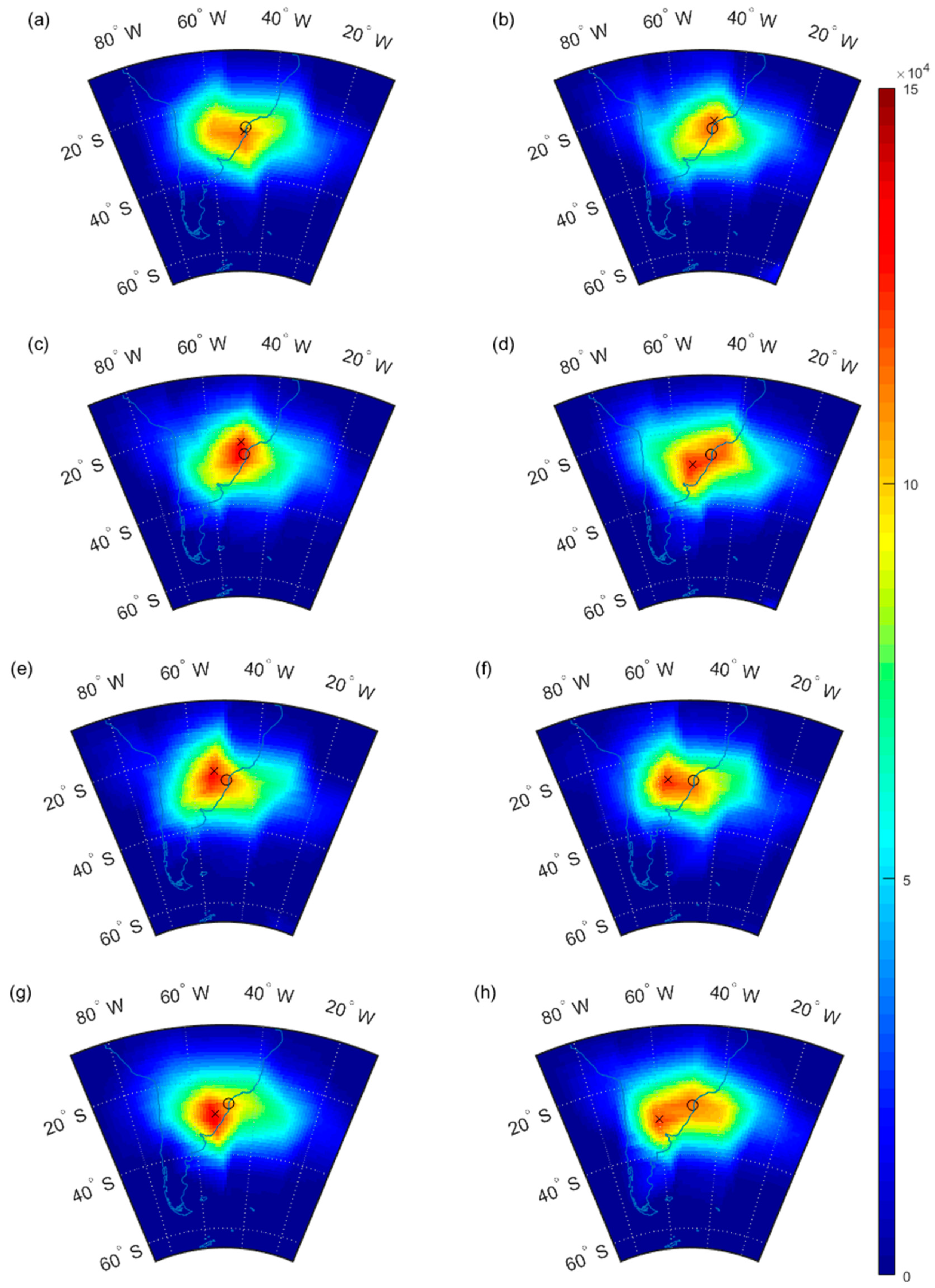

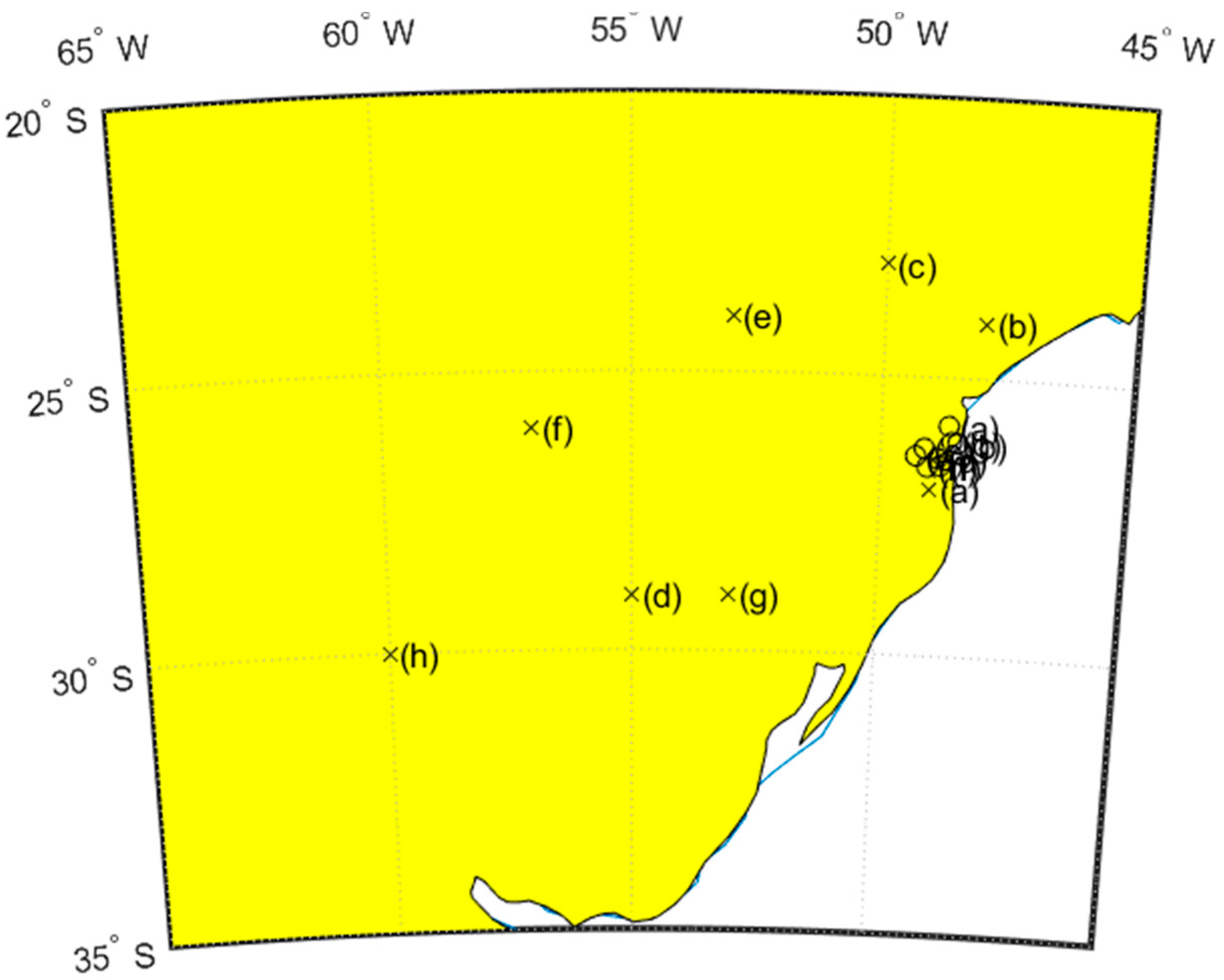
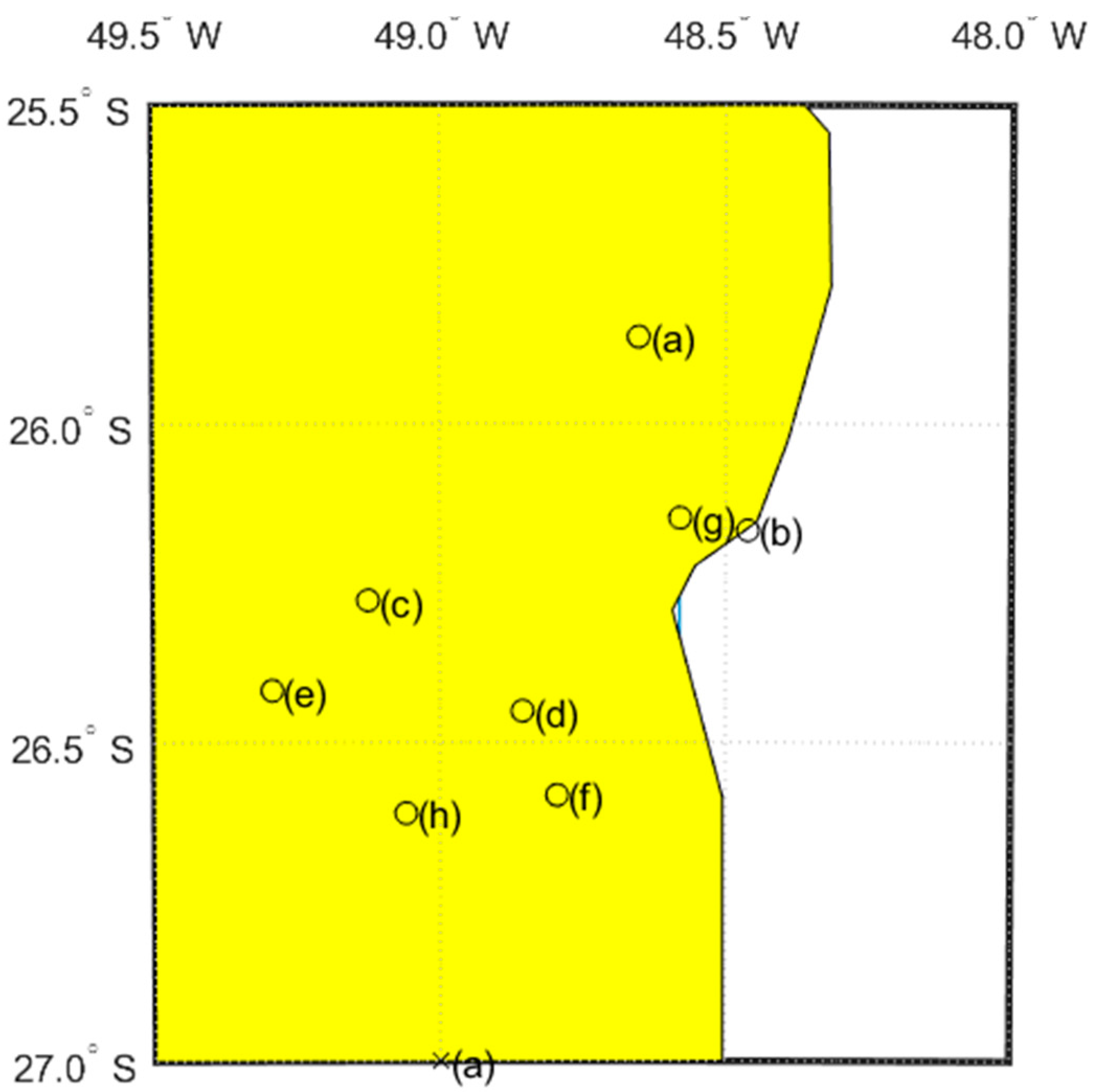

| Study | Westward Drift (°/Year) | Northward Drift (°/Year) | Altitude (km) | Inclination (°) | Time (Year) |
|---|---|---|---|---|---|
| Konradi 1994 [14] | 0.32 | - | 617 450 287 565 | 28.5 28.5 39 58 | 1990–1991 |
| Badhwar 1997 [15] | 0.28 0.03 | 0.08 0.03 | 438 393 | 50 51.65 | 1973, 1995 |
| Bühler 2002 [16] | 0.06 0.05 | 0.06 0.05 | 400 | 52 | 1994–1996 |
| Ginet 2006 [17] | 0.43 0.13 | - | 410–1710 | 69 | 2000–2006 continuous measurement |
| Grigorian 2008 [18] | 0.1–1.0 | 0.1 | 307–393 220 400 500–2500 400 450 | 65 81.6 51.6 81.3 51.6 51.6 | 1960–2003 |
| Fürst 2009 [19] | 0.248 | - | 592 in 1996 488 in 2007 | 23 | 1996–2007 continuous measurement |
| Casadio and Arino 2011 [20] | 0.24 | 0.08 | 782–785 780 800 | 98.52 98.5 98.55 | 1991–2010 continuous measurement |
| Qin 2014 [21] | 0.3 | 0.09 | 813 833 804 833 | 98.7 98.6 98.5 98.7 | 1980–2010 Almost continuous measurement |
| Schaefer 2016 [10] | 0.36 0.06 | 0.16 0.09 | 840–860 | 99 | 2004–2013 continuous measurement |
| Jones 2017 [3] | 0.20 0.04 | –0.11 0.01 | 400–600 | 1993–2011 continuous measurement | |
| Ye 2017 [2] | Various (depends on proton energy) | Various (depends on proton energy) | 512–687 | 81.7 | 1994–2007 continuous measurement |
| Anderson 2018 [12] | 0.277 0.008 | 0.064 0.008 | DMSP F8–F18 | DMSP F8–F18 | 1987–2015 continuous measurement |
| Aubry 2020 [13] | 0.639 0.329 0.256 | – – – | 715 1336 850 | 98 66 98 | 2000–2018 continuous measurement |
| Measurement | Centroid Position Long. Lat. [°] | Max. Position Long. Lat. [°] |
|---|---|---|
| (a) 30 August 2019 | −25.8637 −48.6520 | −27 −49 |
| (b) 30 September 2019 | −26.1674 −48.4611 | −24 −48 |
| (c) 27 March 2020 | −26.2771 −49.1253 | −23 −50 |
| (d) 10 October 2020 | −26.4505 −48.8551 | −29 −55 |
| (e) 1 November 2020 | −26.4186 −49.2932 | −24 −53 |
| (f) 17 November 2020 | −26.5828 −48.7944 | −26 −57 |
| (g) 28 December 2020 | −26.1477 −48.5793 | −29 −53 |
| (h) 2 January 2021 | −26.6111 −49.0591 | −30 −60 |
Publisher’s Note: MDPI stays neutral with regard to jurisdictional claims in published maps and institutional affiliations. |
© 2021 by the authors. Licensee MDPI, Basel, Switzerland. This article is an open access article distributed under the terms and conditions of the Creative Commons Attribution (CC BY) license (http://creativecommons.org/licenses/by/4.0/).
Share and Cite
Kovář, P.; Sommer, M. CubeSat Observation of the Radiation Field of the South Atlantic Anomaly. Remote Sens. 2021, 13, 1274. https://doi.org/10.3390/rs13071274
Kovář P, Sommer M. CubeSat Observation of the Radiation Field of the South Atlantic Anomaly. Remote Sensing. 2021; 13(7):1274. https://doi.org/10.3390/rs13071274
Chicago/Turabian StyleKovář, Pavel, and Marek Sommer. 2021. "CubeSat Observation of the Radiation Field of the South Atlantic Anomaly" Remote Sensing 13, no. 7: 1274. https://doi.org/10.3390/rs13071274
APA StyleKovář, P., & Sommer, M. (2021). CubeSat Observation of the Radiation Field of the South Atlantic Anomaly. Remote Sensing, 13(7), 1274. https://doi.org/10.3390/rs13071274






